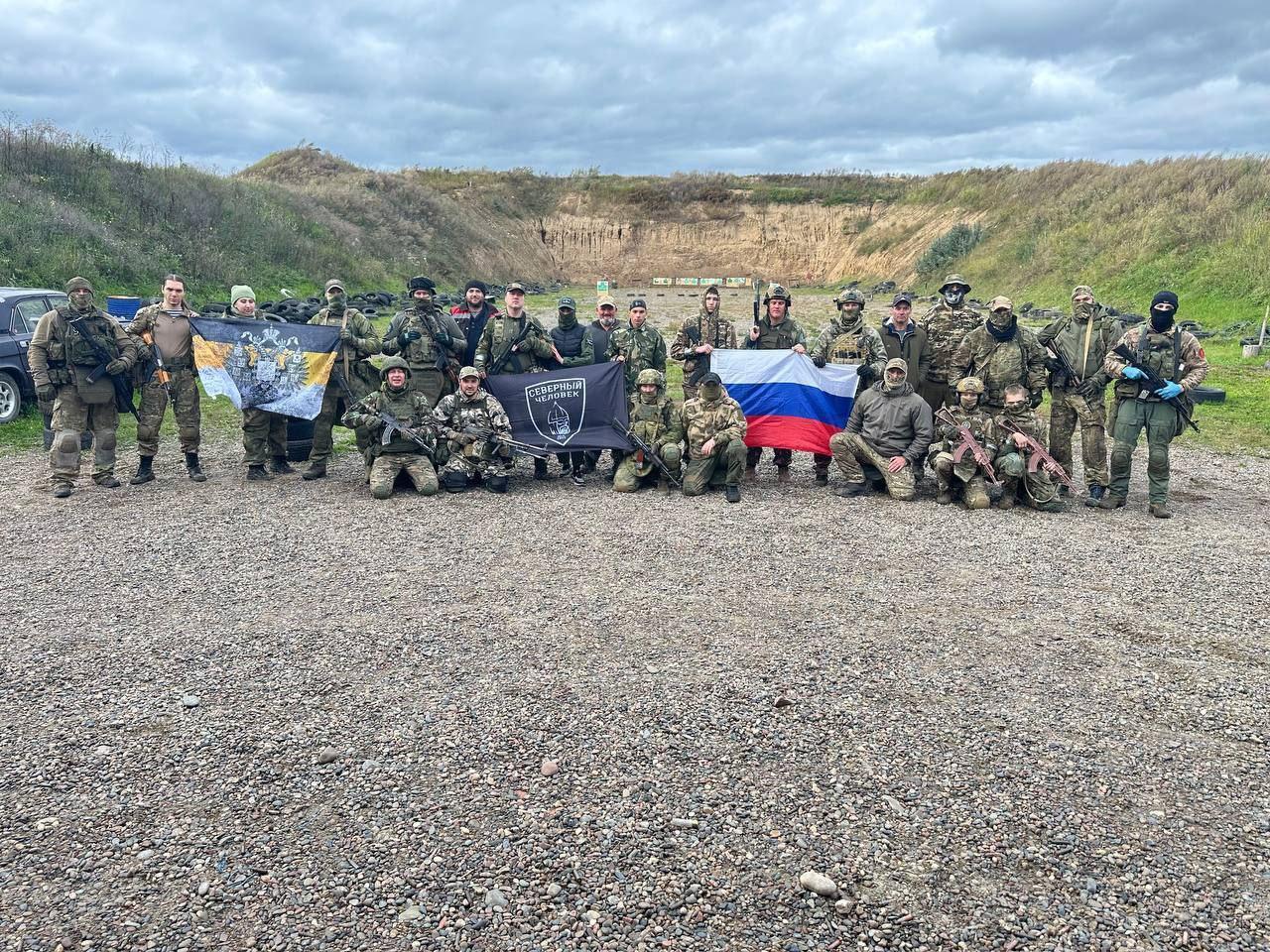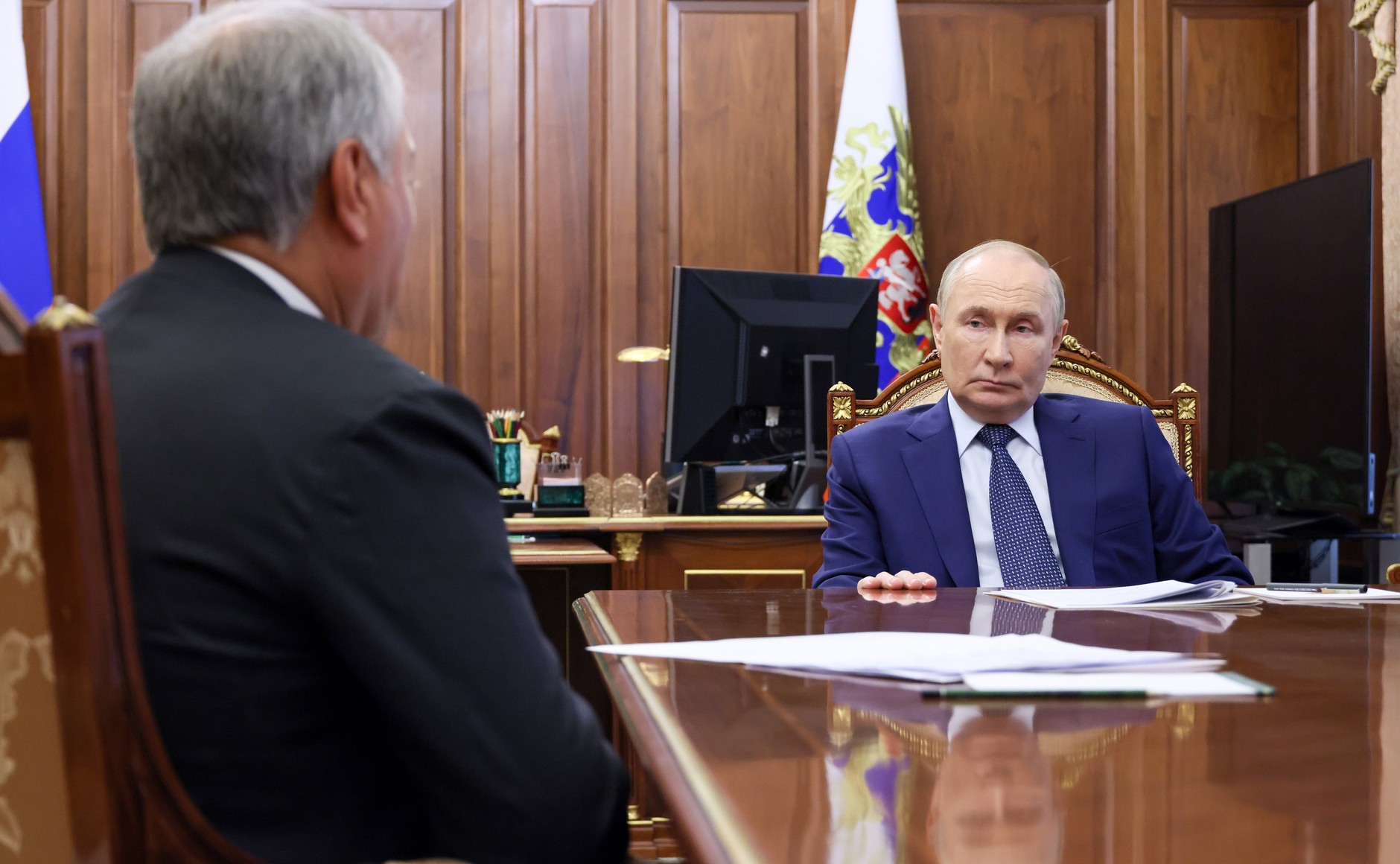
Putin or Bust: Relations of Russian Cossacks With the Kremlin
Putin or Bust: Relations of Russian Cossacks With the Kremlin
Cossacks in St. Peterbsurg recently unveiled a bust of President Vladimir Putin in the guise of a Roman emperor (Gazeta.ru, May 17). The bust, made from synthetic materials, was originally designed to be two and half times larger and made from bronze. It features a Nero-like Putin in a toga but without the ceremonial garland. According to the ataman (leader) of the St. Petersburg Cossacks, Andrei Polyakov, this arrangement means that the bust looks Roman but “he is still ours, he is Russian.” Polyakov explained the reasoning behind the statue as a wish “to immortalize Putin, the victor and statesman who returned Crimea to Russia.” The bust speaks volumes about the Russian president’s growing cult of personality and the personalized nature of his regime. Reportedly, two other statues will appear alongside the bust of Putin: one of Dmitry Sisikov, a St. Petersburg Cossack killed in “Novorossiya [southeastern Ukraine],” and the second will commemorate Pyotr Krasynov, a former ataman of the Don Cossack host who was put to death in Moscow in 1947 for conspiring with the Nazi German invaders (Lenta.ru, May 17). While one could infer several things about the infamous company the St. Petersburg Cossacks chose for the statue of Putin, the continued presence and apparent growth in importance of such social movements as the Cossacks speaks volumes about contemporary Russian society.
The Cossacks were originally peasants who fled from their masters and settled on the lands at the fringes of Russia. The earliest roots of the Cossacks are traced to the Zaporizhian Sich (a polity), which became a vassal of the Polish-Lithuanian Commonwealth in the latter half of the 16th century, after a brief period of independence. In the 18th century, the Cossacks were enlisted into Russian military forces and became part of Catherine II’s Russia. The Cossacks played a major role in expanding the borders of the Russian Empire and, as a consequence, some were relocated to borderlands such as Krasnodar Krai by the tsars. Today, they are frequent advocates of monarchy (Richard Arnold, “Testing Constructivism: Why Not More Cossacks in Krasnodar Krai?” Post-Soviet Affairs, 2014). Allying with the Whites in the Russian Civil War (1917–1922), the Cossacks were subsequently persecuted by the Bolsheviks, who attempted to eradicate their culture from the land. However, Cossack units were mobilized for and participated in the Second World War.
In the post-Soviet period, Russian political authorities have tried to co-opt the Cossacks. Cossacks featured prominently in this year’s Victory Day celebrations on May 9, and a group of Cossacks in Russia’s south began a horse-riding caravan on April 17, traveling to Volgograd (formerly Stalingrad), Astrakhan and other population centers ravaged by the Nazis during World War II. The caravan arrived in Rostov just in time for the May 9 celebrations and paraded through the city. The caravan plans to continue on to the city of Sevastopol in the newly-annexed Crimea, to arrive there in time for Russia Day, on June 12 (Vesti.ru, April 29). Thus, Cossack social groups are being used by the Kremlin to cement Crimea’s cultural position in Russia (see EDM, November 14, 2014). Oftentimes, Russian Cossacks form a base of support for conservative legislation and pro-Orthodox positions. Russian Cossack groups have also regularly been a feature of pro-Kremlin propaganda events such as the “anti-Maidan rally” in Moscow earlier this year (see EDM, February 24, 2015).
The Kremlin has made many formal attempts to co-opt the Cossack movement, not only under the Putin administration. In 1992, President Boris Yeltsin gave the Cossacks a special place among the so-called “repressed nations” with decree No. 632 “on the rehabilitation of repressed nations in relation to Cossacks.” In 1995, the Russian state elevated this status once again by creating a state register of Cossack societies, which placed Cossack formations under the supervision of the Ministry of Justice (Word document of the law, August 9, 1995). Putin intensified such efforts and made Cossacks formally accountable only to the president of the Russian Federation or his special plenipotentiary for Cossack affairs (Kremlin.ru, February 25, 2003). And over Putin’s tenure, the Cossacks have similarly gained in importance. For example, one law in recent years recognizes the growing role of the Cossacks in preserving the Russian state. Accordingly, the government plans to develop the Cossacks into “an important factor in strengthening inter-ethnic stability in the Russian Federation […] [through] the development of interconnections of Russian Cossacks with national-cultural autonomies and other social formations, [thus] contributing to the conservation and cultures of the nations of the Russian Federation” (kremlin.ru, September 15 2012). Cossacks have also been brought fully into state service, and registered Cossacks receive state funds without being a formal part of the military or law enforcement (see EDM, September 10, 2013).
Yet, government decrees avoid the troublesome question of how to classify Cossack movements. On the one hand, there are debates about claiming an ethnic origin to Cossack identity, a view which is more popular in the traditional Cossack lands around the Zaporozhian Sich and the North Caucasus. The 2014 Sochi Winter Olympics attempted to present the Cossacks as the indigenous people of Krasnodar Krai, for example (see EDM, January 29, 2014). Yet the administration has been reluctant to cast Cossacks as a fully-fledged ethnic group for fear of re-igniting separatist agitation for an autonomous, or even independent, Cossackia (Jamestownfoundation.blogspot.com, March 24, 2014). And all this does not even touch on the internal divisions among the various Russian and international Cossack movements, divisions that multiply at the regional level. For now, it seems, agreeing on an image of Putin as the new Nero is all that can be managed.


